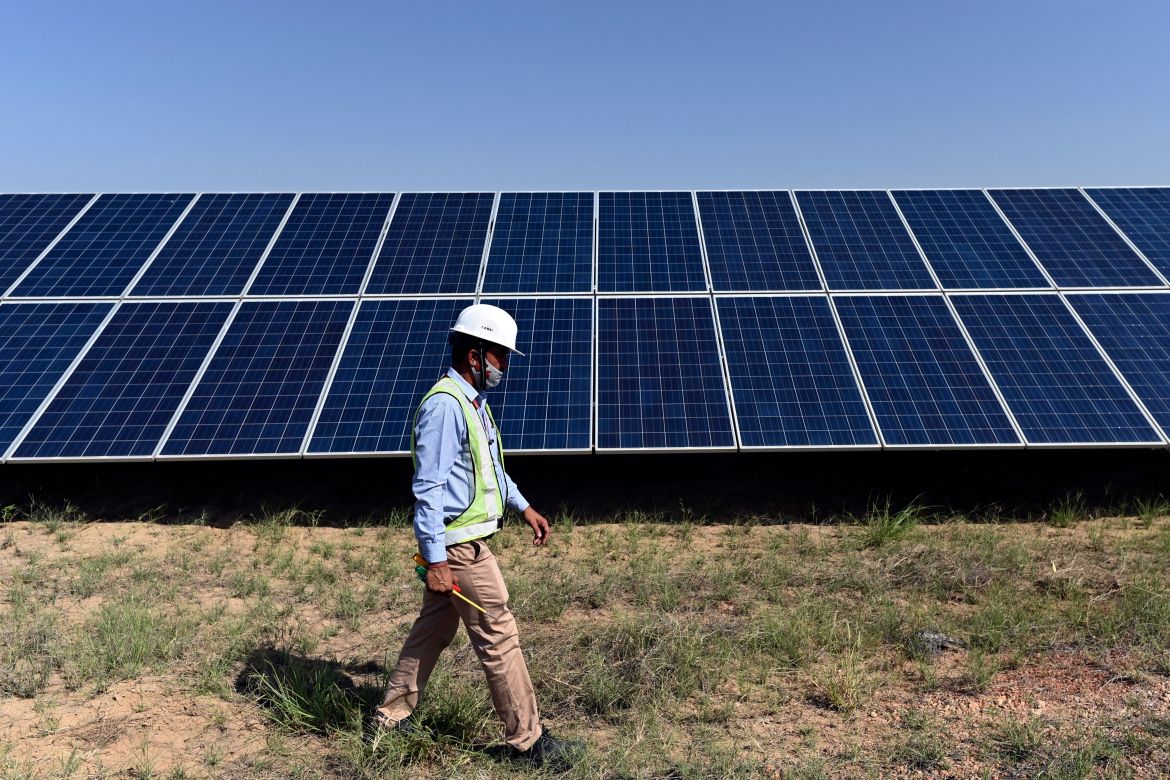In Pictures
India unveils renewable energy ambitions with big solar push
Prime Minister Narendra Modi says India to produce more energy through solar and other renewables than nation’s entire grid by 2030.

Coal powers 70 percent of India’s electricity generation, but Prime Minister Narendra Modi has pledged that by 2030, India will produce more energy through solar and other renewables than its entire grid now.
“First, India will increase its non-fossil energy capacity to 500 gigawatts … Second, by 2030, 50 percent of our energy requirements will come from renewable resources,” Modi told the COP26 climate summit in Glasgow.
The arid state of Rajasthan, where Bhadla Park takes up an area almost the size of San Marino, sees 325 sunny days each year, making it perfectly placed for the solar power revolution, officials say.
Once an expanse of desert, authorities have capitalised on the sparsely populated area, claiming minimal displacement of local communities. Today, robots clean dust and sand off an estimated 10 million solar panels, while a few hundred humans monitor.
This pursuit of a greener future is driven by necessity.
India, home to 1.3 billion people and poised to overtake China as the most populous country, has a growing and voracious appetite for energy, but it is also on the front line of climate change.
In the next 20 years, it has to add a power system the size of Europe’s to meet the demand for its swelling population, according to the International Energy Agency (IEA), but it also has to tackle toxic air quality in its big cities.
“India is one of the most vulnerable countries in the world for climate change and that is why it has this big push on renewables to decarbonise the power sector, but also reduce air pollution,” said Arunabha Ghosh, a climate policy expert from the Council on Energy, Environment and Water.
But experts say the country, the world’s third-biggest carbon emitter, is some way from reaching its green targets, with coal set to remain a key part of the energy mix in the coming years.
Although India’s green energy has increased five-fold in just over 10 years to 100 this year, the sector now needs to grow by the same proportion again to meet its 2030 goals.
Proponents point to Bhadla Solar Park, one of the largest in the world, as an example of how innovation, technology, and public and private finance can drive swift change.
“We’ve huge chunks of land where there’s not a blade of grass. Now you don’t see the ground any more. You just see solar panels. It’s such a huge transformation,” said Subodh Agarwal, Rajasthan’s additional chief secretary for energy.
Authorities are incentivising renewables firms to set up in the region, known as the “desert state”. Agarwal says demand has “accelerated” since 2019.
“It will be a different Rajasthan. It will be the solar state,” he said of the next 10 years.
If this surge is sustained then coal-fired power for electricity generation could peak by 2024, according to Institute for Energy Economics and Financial Analysis (IEEFA) projections.
Currently, solar power accounts for four percent of electricity generation. Before Modi’s announcement, the IEA estimated solar and coal will converge at approximately 30 percent each by 2040 based on current policies.







